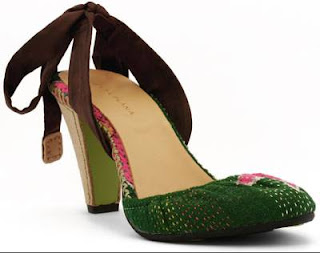This is quite hard, as it is a very new area of research, and you have already looked at two of the key texts for this subject: “Fashion East” by Djurdja Bartlett and “Fashioning Socialism” by Judd Stitziel. I imagine these have links to all of the things I might suggest here as they are very thorough, and since it’s a new field, have captured and critiqued most of what has already been written. You have also seen the documentary, Ein Traum in Erdbeerfolie (A Dream in Strawberry Foil) which captures the wild, experimental, and often seedy, even sleazy, fashion that emerged from the Underground, reminiscent of the style captured by the Neue Sachlichkeit artists who were both critical and yet immersed in the depraved culture of the Weimar Republic in the 1920s.
If you haven’t already looked at “Too Much Future/In Grenzen Frei: Fashion, Photography, Underground Culture in the Former East German 1979-89, (edited by Michael Boehike) then this would be worth a look. The photography in Sibylle Magazin was very important for the style of the era, and, as I am sure you already know, they included patterns in the magazine so that readers could create the clothes shown within, but which they could not afford to buy. The exhibition In Grenzen Frei at the Museum of Decorative Arts in Berlin is covered well on the internet.
Finally, for primary research, the German Historical Museum in Berlin has a collection of designs from this era I believe which would definitely be worth visiting and documenting photographically, as universities like to see that you have seen things first hand.
(You could cover what happened to fashion in China, but I think there is so much you can explore in Eastern Europe, that it is best to keep your focus there. Again, the tighter the focus, the higher grade you will get.)
Your main problem will be writing something 'new'. With this field being only recently explored in the academic world, there is not much material already out there for you to research. You could look at how the creativity that came out of such repression then fed back into the free western world, perhaps through conceptual fashion, and/or fetish wear. Or you could look at how the street styles in the free world crept into eastern block fashion, such as punk, grunge, etc. You do need an angle, otherwise you are in danger of just regurgitating what others have written.
This article is interesting and readable. It struck me that there was a slight similarity to the photo of the model with the tree like head piece from the design group 'Kathi' and the Alexander McQueen antler garment.http://www.goethe.de/kue/des/prj/mod/thm/en5254130.htm
(You could cover what happened to fashion in China, but I think there is so much you can explore in Eastern Europe, that it is best to keep your focus there. Again, the tighter the focus, the higher grade you will get.)
Your main problem will be writing something 'new'. With this field being only recently explored in the academic world, there is not much material already out there for you to research. You could look at how the creativity that came out of such repression then fed back into the free western world, perhaps through conceptual fashion, and/or fetish wear. Or you could look at how the street styles in the free world crept into eastern block fashion, such as punk, grunge, etc. You do need an angle, otherwise you are in danger of just regurgitating what others have written.
This article is interesting and readable. It struck me that there was a slight similarity to the photo of the model with the tree like head piece from the design group 'Kathi' and the Alexander McQueen antler garment.http://www.goethe.de/kue/des/prj/mod/thm/en5254130.htm


























































